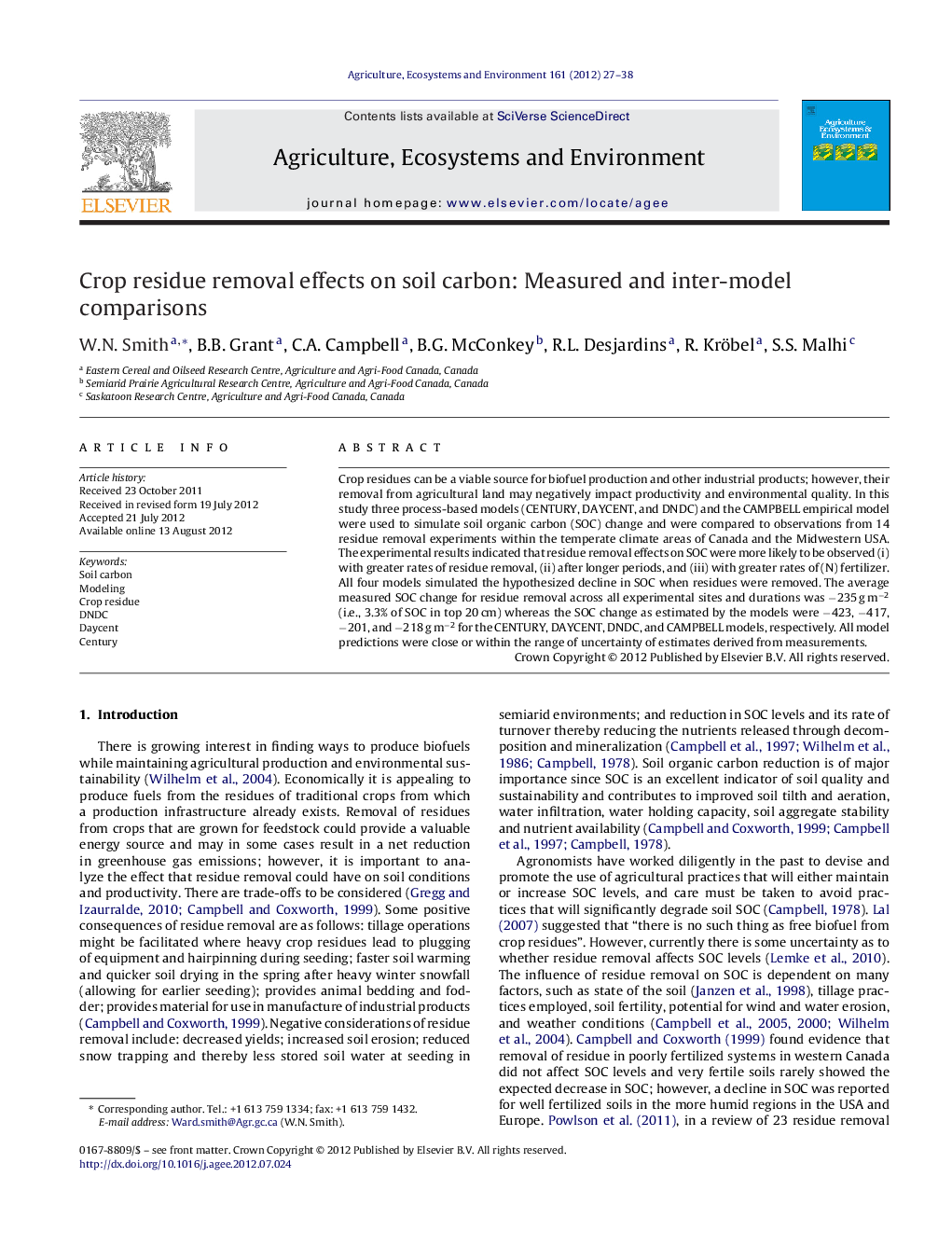| Article ID | Journal | Published Year | Pages | File Type |
|---|---|---|---|---|
| 2414400 | Agriculture, Ecosystems & Environment | 2012 | 12 Pages |
Crop residues can be a viable source for biofuel production and other industrial products; however, their removal from agricultural land may negatively impact productivity and environmental quality. In this study three process-based models (CENTURY, DAYCENT, and DNDC) and the CAMPBELL empirical model were used to simulate soil organic carbon (SOC) change and were compared to observations from 14 residue removal experiments within the temperate climate areas of Canada and the Midwestern USA. The experimental results indicated that residue removal effects on SOC were more likely to be observed (i) with greater rates of residue removal, (ii) after longer periods, and (iii) with greater rates of (N) fertilizer. All four models simulated the hypothesized decline in SOC when residues were removed. The average measured SOC change for residue removal across all experimental sites and durations was −235 g m−2 (i.e., 3.3% of SOC in top 20 cm) whereas the SOC change as estimated by the models were −423, −417, −201, and −218 g m−2 for the CENTURY, DAYCENT, DNDC, and CAMPBELL models, respectively. All model predictions were close or within the range of uncertainty of estimates derived from measurements.
► We assess the influence of crop residue removal on SOC as affected by management. ► We simulate the effect that residue removal has on SOC using 4 models. ► The model results rarely coincided with measured SOC changes. ► All models predicted the hypothesized trend in SOC change.
